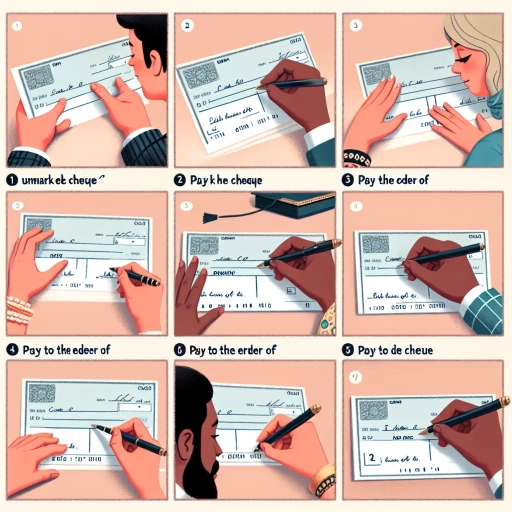How To Write A Cheque

Understanding the Basics of Cheque Writing
What is a Cheque?
A cheque is a written document that orders a bank to pay a specific amount of money from a person's account to the person in whose name the cheque has been issued. The person writing the cheque, known as the drawer, has a transaction banking account where the money is withdrawn. Although cheques have faced stiff competition from digital and card payments, they still remain a preferred mode of payment for many businesses and individuals due to their ease of use, record keeping, and control over the timing of payments.
Standard Components of a Cheque
The standard cheque has several key components. These include the account holder's details, the cheque number, the MICR (Magnetic Ink Character Recognition) code, and the IFSC (Indian Financial Systems Code) code. Understanding these components is crucial, not just for writing cheques but also for ensuring that your cheque is valid and can be processed without any issues. Knowing the anatomy of a cheque will help you understand better the steps to write a cheque and provide clear instructions to your bank.
Why Cheques are Still Relevant
Even in our digital world, there's still a place for paper cheques. They offer an easy and secure way to pay, especially for those without access to digital banking services. Besides, cheques do not have limits on the transaction amount, and this makes it an ideal choice for large payments. Additionally, cheques provide a physical record of payment, making it simpler to manage finances and track payments.
Step-by-Step Guide to Writing a Cheque
Dating the Cheque
The date is the first crucial element in a cheque and it is used to determine when the cheque can be deposited or en-cashed. Some people use post-dated cheques as a type of payment agreement. However, it is essential to ensure that you have sufficient funds on the date written to avoid an overdraft or returned cheque charge.
Filling out the Payee Line
The payee line is where you write the name of the person or company to whom the cheque is to be paid. It is crucial to spell the name correctly to avoid issues, especially if the cheque is large. If your cheque is payable to "bearer" or "cash," anyone who has the cheque can potentially cash it.
Writing the Cheque Amount
You need to write the amount in a specific format, both in numbers and words. You should ensure that the number version of the amount includes the decimal portion and should be written as close to the dollar sign as possible to prevent fraud. On writing the amount in words, it's important to start with the dollar component followed by the word "and," then the cent components. This is a way to verify the payments and reduce the potential for any fraudulent activities.
Safety Tips for Writing a Cheque
Minimize Space on the Cheque
When writing on a cheque, ensure you use a pen and always write legibly to minimize chances of tampering. Also, it's advisable to avoid leaving spaces before or after the names and figures to prevent others from inserting additional numbers or names.
Use of 'Account Payee'
To enhance safety, it's advisable to even double cross the cheque and mark it as 'Account Payee' which makes the cheque non-transferable and the money can be deposited only into the account of the individual to whom the cheque has been paid.
Never Pre-Sign Cheques
Never sign a cheque until all other fields are filled in. Always place your signatures above your name. If you sign a blank cheque and it lands in the wrong hands, it can be filled out and cashed, leading to unauthorized transactions.